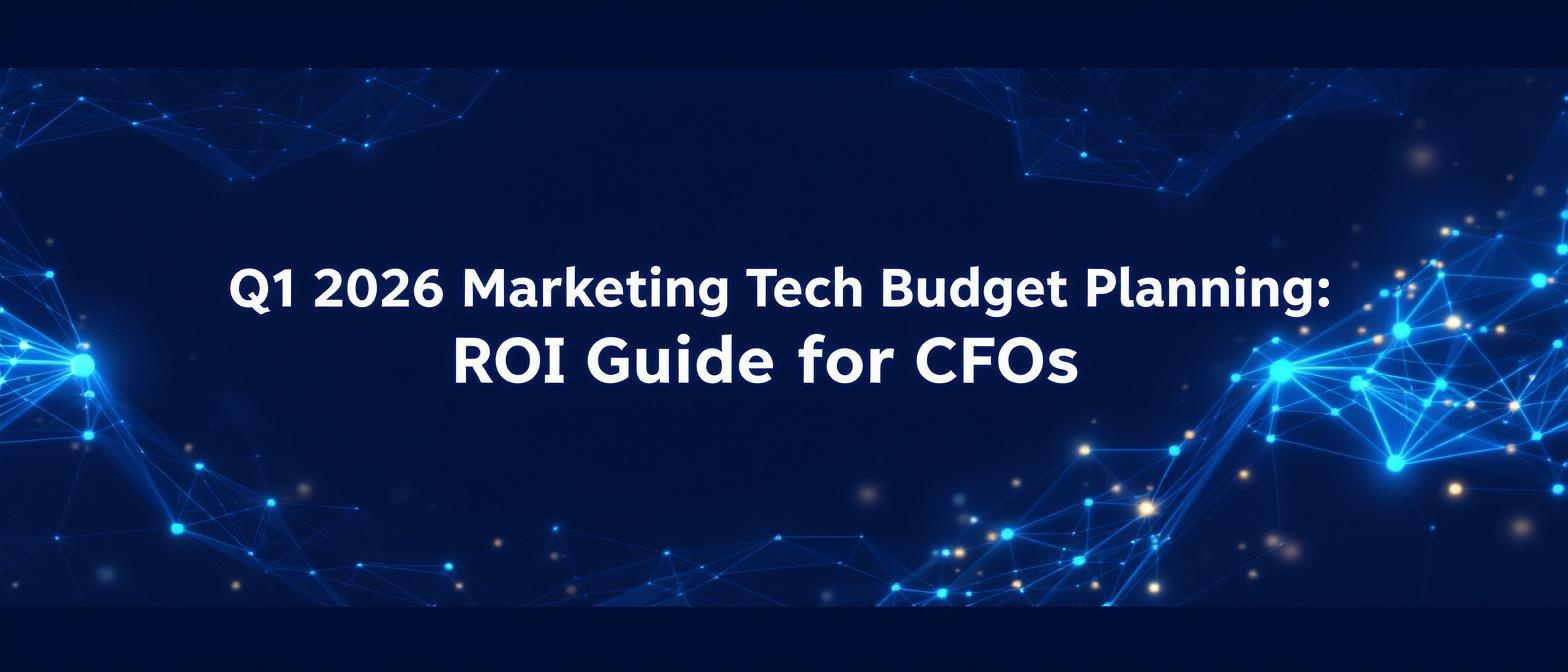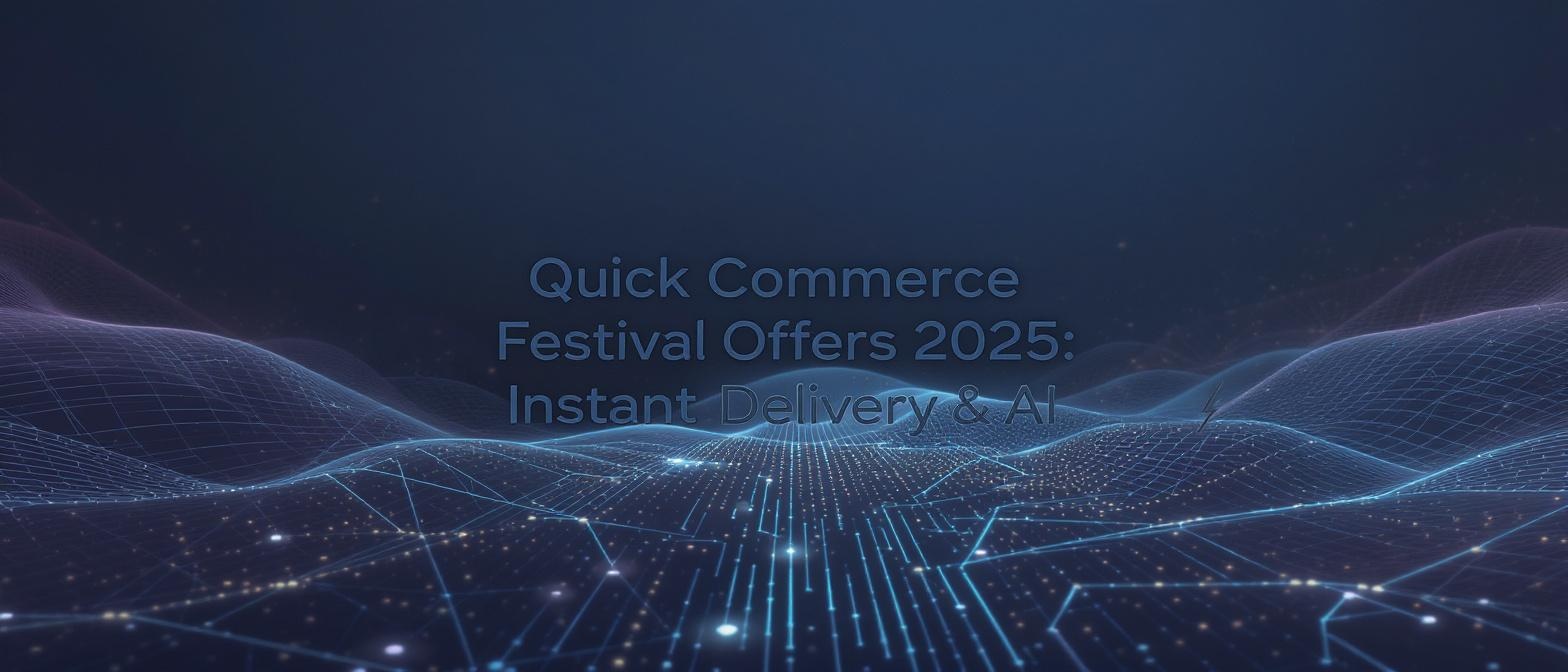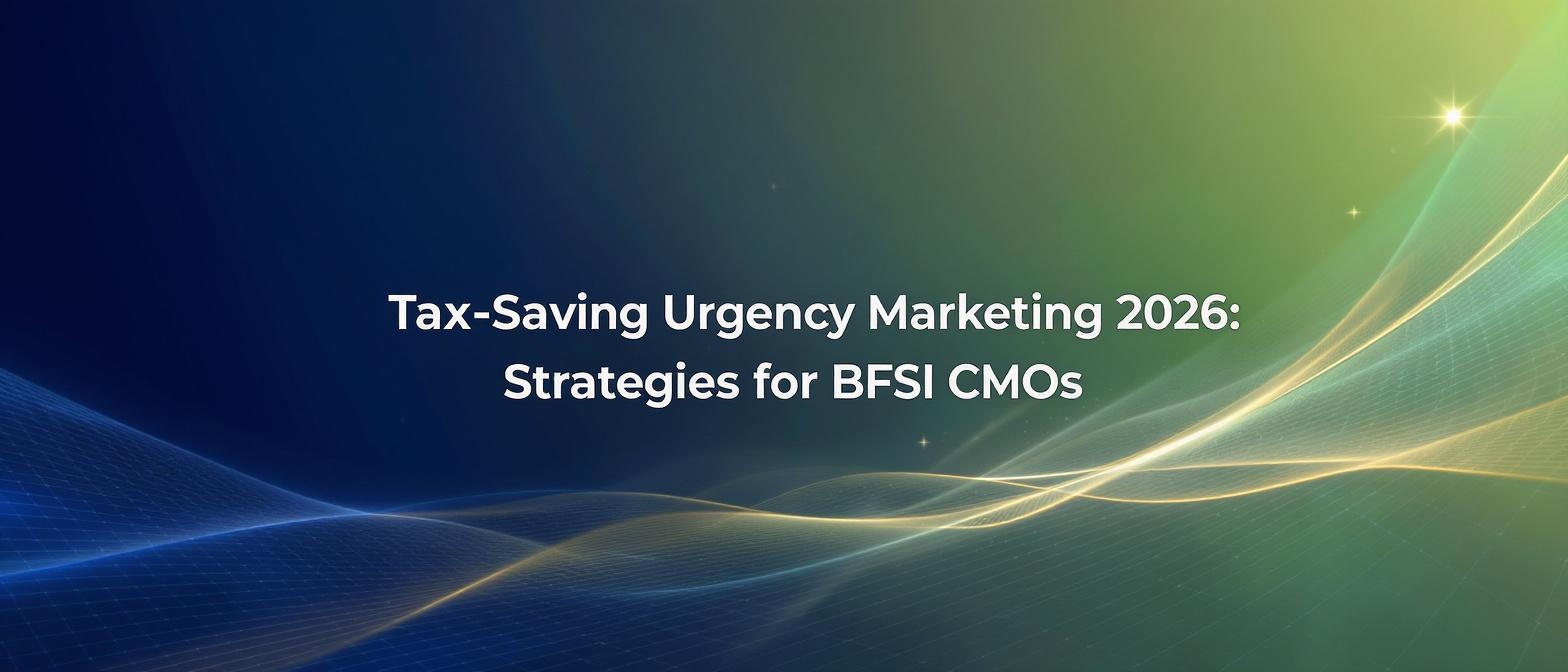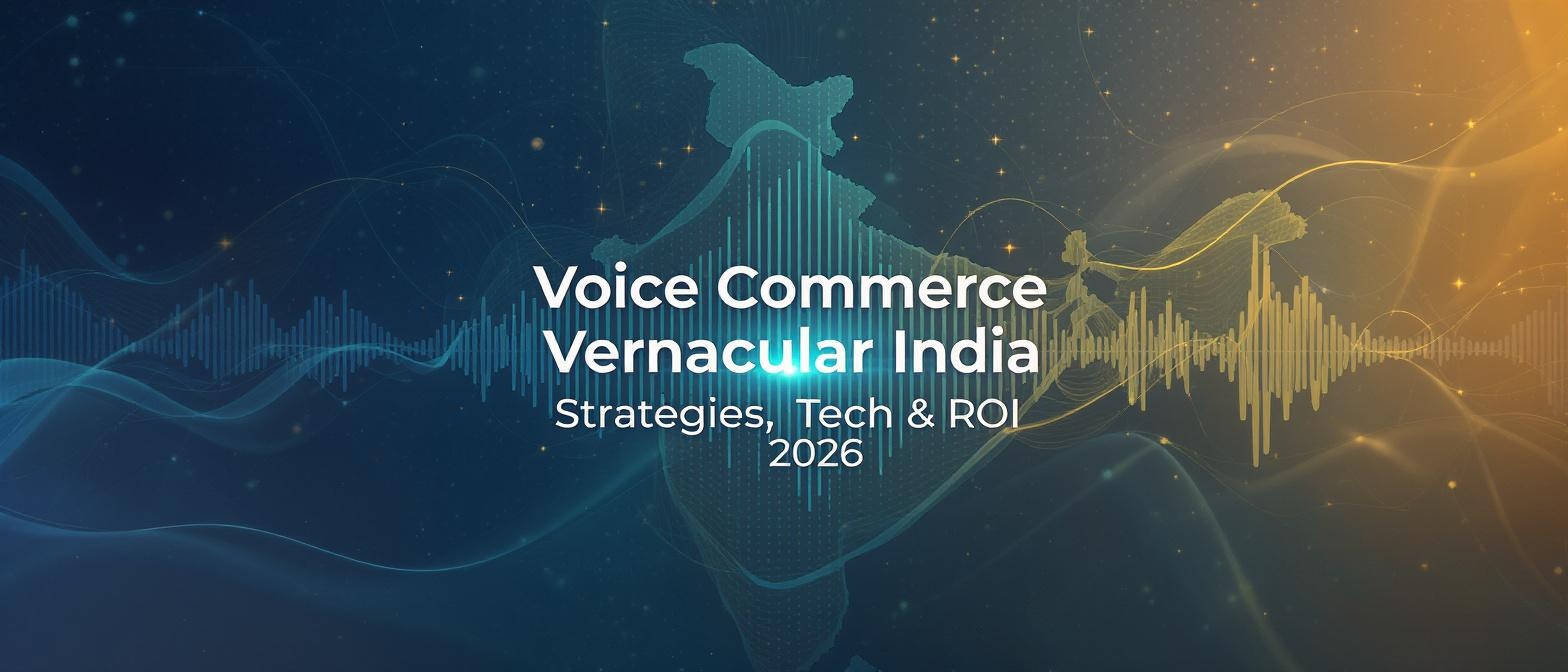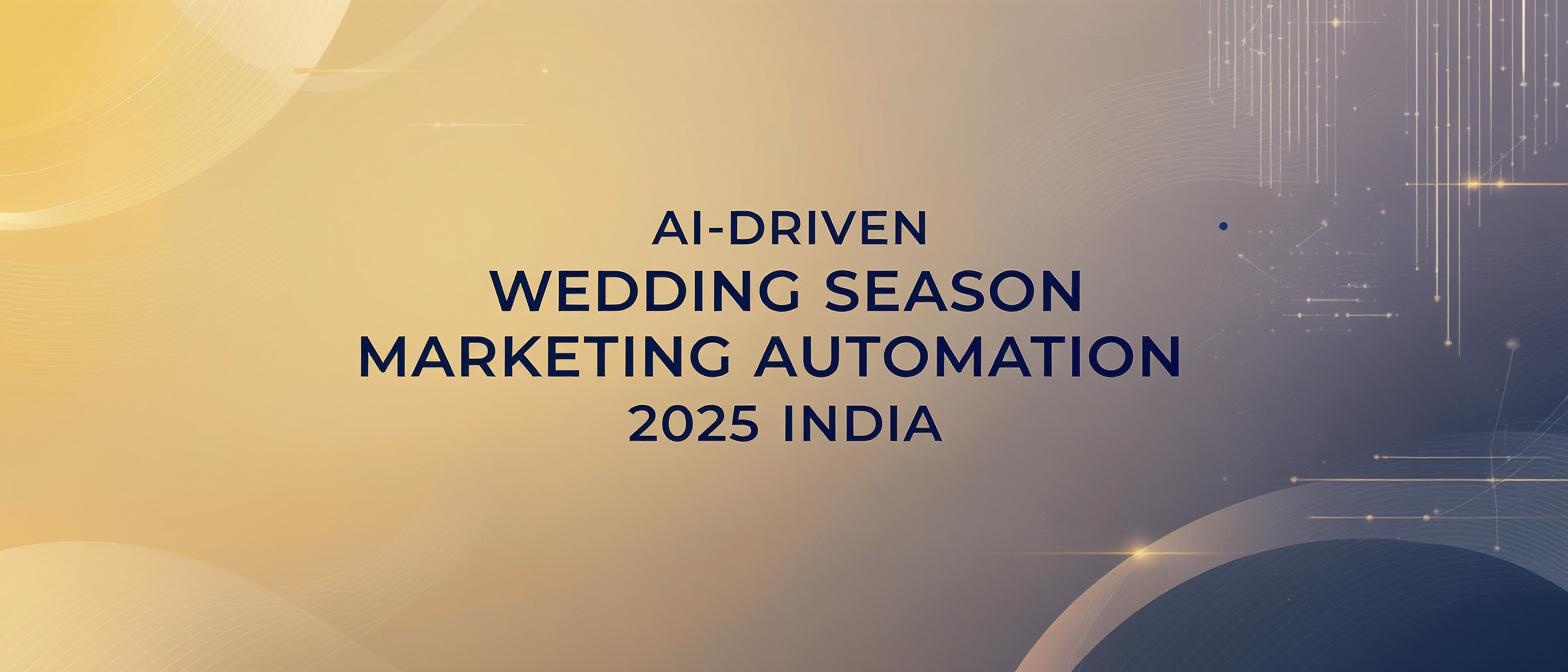The CFO’s Guide to Q1 2026 Marketing Technology Budget Planning: An ROI-Driven Framework
Estimated reading time: ~14 minutes
Key Takeaways
- Your Q1 2026 martech budget can drive sustainable growth if strategically planned.
- AI investments are now essential for personalization, efficiency, and competitive differentiation.
- Demonstrate data-driven ROI and cost-benefit analyses to gain CFO approval.
- Scenario analyses and clear attribution models strengthen budget justification.
- Ongoing technology spend optimization ensures maximum returns on martech investments.
As the April-June 2026 planning window approaches, Chief Financial Officers and finance teams face a pivotal task: allocating, justifying, and optimizing the marketing technology budget for the next fiscal year. This is no longer a routine line-item review; it’s a strategic exercise in funding the engine of enterprise growth. The process of Q1 2026 marketing technology budget planning defines how businesses will compete, innovate, and connect with customers in an increasingly AI-dominated landscape.
The first quarter is critical. It establishes the baseline Key Performance Indicators (KPIs), aligns marketing spend with broader fiscal-year objectives, and provides the crucial opportunity to integrate emerging AI trends before mid-year revisions become necessary. For leaders with a strategic and financial search intent, the goal is clear: move beyond vague promises and build a budget defense rooted in robust frameworks, predictive ROI models, and meticulous cost-benefit analyses. This guide provides a comprehensive roadmap for navigating fiscal year AI marketing investment planning and building a resilient, high-return marketing tech stack for 2026.
Section 1: AI Marketing Investment Planning for FY 2026
Fiscal year AI marketing investment planning involves dedicating expenditures to intelligent platforms that leverage machine learning, natural language processing, and computer vision. These technologies are no longer experimental; they are core to automating personalization, scaling content creation, and refining campaign targeting with surgical precision.
Industry forecasts underscore this shift. Top-performing marketers are projected to dedicate a significant 10–15% of their total martech budgets to AI by 2026. Furthermore, with an overwhelming 88% of marketing leaders reporting the operational integration of AI tools, the question is no longer if you should invest, but how and where.
Key AI Investment Areas for FY 2026:
- Predictive Analytics Engines: These platforms analyze historical and real-time data to forecast customer behavior, identify churn risks, and pinpoint high-value segments for targeted campaigns.
- Dynamic Content Generators: AI-powered tools that create and adapt ad copy, email subject lines, and even video content on the fly to match individual user profiles and preferences.
- Conversational AI (Chatbots): Advanced chatbots that provide 24/7 customer support, guide users through sales funnels, and gather valuable first-party data through natural language interactions.
- Programmatic Ad-Buying Platforms: AI algorithms that automate the purchasing of digital advertising, optimizing ad spend in real-time to maximize reach and conversion rates across multiple channels.
The financial justification for these investments is compelling. According to extensive case study analysis, pilot AI projects that are tightly aligned with specific revenue goals deliver an average ROI of over 100%. This demonstrates that when implemented strategically, AI is not a cost center but a powerful revenue multiplier.
Source: https://www.truefan.ai/blogs/2026-marketing-technology-budget-planning
Section 2: Marketing Tech Stack Planning for Fiscal 2026
Effective marketing tech stack planning for fiscal 2026 requires a strategic, layered approach. A best-practice enterprise stack ensures a seamless flow of data and enables increasingly sophisticated marketing plays, from foundational automation to hyper-personalized engagement.
A modern, high-performance stack typically follows this architecture:
- Customer Data Platform (CDP): The foundation. A CDP unifies customer data from all sources (CRM, website, mobile app, etc.) into a single, persistent customer profile.
- Cost Drivers: Data integration, identity resolution, license fees, and data governance personnel.
- Performance Metrics: Time-to-value, data accuracy, and user adoption rates across marketing teams.
- Marketing Automation Platform: The execution engine. This layer uses the unified data from the CDP to trigger automated campaigns like email drips, lead scoring, and personalized journeys.
- Cost Drivers: Subscription fees (often based on contact volume), onboarding and training, and integration with the CRM.
- Performance Metrics: Reduction in cost per lead, MQL-to-SQL conversion rate lift, and campaign cycle time.
- AI Personalization Engine: The intelligence layer. This technology analyzes CDP data in real-time to dynamically tailor website content, product recommendations, and offers for each individual user.
- Cost Drivers: API call volume, model training and maintenance, and A/B testing resources.
- Performance Metrics: Uplift in conversion rates, average order value (AOV), and customer lifetime value (CLV).
- Video Personalization API: The engagement amplifier. This advanced layer integrates with the personalization engine to generate unique, one-to-one videos at scale, addressing customers by name or referencing their specific context. Platforms like TrueFan AI enable this capability with enterprise-grade APIs.
- Cost Drivers: Per-video generation costs, celebrity or talent licensing, and integration with existing communication channels (WhatsApp, email).
- Performance Metrics: Video completion rate, click-through rate, and direct impact on conversion or retention.
- Analytics & Attribution Dashboards: The measurement and optimization hub. This layer visualizes performance across the entire stack, providing insights into campaign effectiveness and overall marketing ROI.
- Cost Drivers: Licensing for business intelligence (BI) tools, data warehousing costs, and analyst time.
- Performance Metrics: Marketing-influenced revenue, multi-touch attribution accuracy, and ROI per channel.
To de-risk a full-stack rollout, a sequential approach is recommended. Begin with foundational CDP and marketing automation to establish data hygiene and streamline basic workflows. Once mastered, layer on AI personalization and video to amplify engagement and drive exponential returns, ensuring minimal operational disruption.
Section 3: Enterprise Video Marketing Budget Allocation 2026
Enterprise video marketing budget allocation 2026 is the strategic earmarking of funds for video content creation, distribution, and, most importantly, AI-powered personalization. As generic video ads lose their impact, hyper-personalization has emerged as the key differentiator for engaging and converting audiences at scale.
This is where advanced generative AI video solutions become a critical investment. With features like hyper-personalization at scale, support for over 175 languages, real-time API renders in under 30 seconds, and the ability to perform “virtual reshoots” to change messaging without recalling talent, these platforms redefine what’s possible. TrueFan AI’s 175+ language support and Personalised Celebrity Videos are prime examples of this technology in action, allowing brands to connect with global audiences with local relevance.
A data-driven framework for allocating your video budget should look like this:
- Creative Production & Celebrity Licensing (30-40%): This covers the initial costs of shooting the base video content and securing rights for celebrity or brand ambassador talent.
- AI Integration & API Calls (25-35%): This portion is allocated to the per-video generation costs, API integration with your existing martech stack, and platform licensing fees.
- Localization & Voice-Clone Fees (15-20%): Budget dedicated to adapting the content for different regions, including AI-powered voice cloning and lip-syncing for authentic multilingual delivery.
- Testing & Analytics Dashboards (10-15%): Funds set aside for A/B testing different video variations, analyzing performance data, and optimizing campaigns for maximum ROI.
The power of this approach is proven. In a landmark campaign, food delivery giant Zomato partnered with TrueFan to generate 354,000 unique, personalized videos in a single day, leading to a significant uplift in order volumes and unprecedented social media engagement. This case study highlights how strategic budget allocation toward AI video personalization can yield massive returns.
Source: TrueFan AI Product Offerings Executive Document
Section 4: Marketing Automation ROI Planning & Cost-Benefit Analysis
Marketing automation refers to software designed to automate repetitive marketing tasks, nurture leads, and trigger campaigns based on user behavior, all while integrating seamlessly with your CRM. A robust marketing automation cost-benefit analysis is essential for securing budget approval.
The core formula for marketing automation ROI planning is straightforward:
ROI (%) = [(Revenue Lift – Total Automation Cost) / Total Automation Cost] × 100
To use this formula effectively, you must meticulously account for all costs and quantify all benefits.
Cost Elements:
- Licensing Fees: Annual or monthly subscription costs for the platform.
- Integration & Onboarding: One-time costs for connecting the platform to your existing systems (CRM, CDP).
- Training & Change Management: Resources required to train your team to use the platform effectively.
- Maintenance & Support: Ongoing costs for technical support and platform upkeep.
Benefit Streams:
- Time Savings & Efficiency: Marketers can save between 1-5 hours per week on repetitive tasks, freeing them up for more strategic work.
- Increased Purchase Frequency: Automated and personalized nurturing campaigns can lead to a 35% higher purchase frequency among targeted customers.
- Reduced Cost Per Lead: More efficient targeting and lead scoring can result in a 20-30% reduction in cost per lead.
Sample Cost-Benefit Table (Annual)
| Cost/Benefit Item | Annual Cost | Annual Benefit/Value | ROI |
|---|---|---|---|
| Platform Licensing | ₹500,000 | - | - |
| One-Time Integration | ₹200,000 | - | - |
| Total Cost | ₹700,000 | - | - |
| Incremental Revenue Lift | - | ₹1,200,000 | - |
| Efficiency Gains (Value) | - | ₹300,000 | - |
| Total Benefit | - | ₹1,500,000 | - |
| Net Gain / Overall ROI | - | ₹800,000 | 114% |
To continuously track and justify this investment, your KPI dashboard should focus on metrics like cost per lead, MQL→SQL conversion lift, and reductions in campaign cycle time.
Source: https://www.truefan.ai/blogs/2026-marketing-technology-budget-planning
Source: Forrester: The Total Economic Impact of Marketing Automation
Section 5: AI Personalization Technology Investments
AI personalization technology investments focus on the dynamic tailoring of content—including text, offers, and video—to individual users based on their profile, behavior, and real-time context. This goes far beyond using a customer’s first name in an email; it’s about creating a truly one-to-one experience.
The impact of genuine AI personalization is measurable and significant. Real-world campaign data shows compelling results:
- Goibibo achieved a +17% WhatsApp message read rate by sending users personalized videos featuring a celebrity mentioning their searched travel destination.
- Dainik Bhaskar saw 3.2× higher contest participation when invitations were delivered via personalized celebrity videos.
- A major telecom client was able to achieve a 50% reduction in customer churn by deploying personalized retention videos.
These metrics prove that AI personalization is a powerful driver of engagement and loyalty. However, successful implementation requires careful planning and investment in several key areas:
- Data Quality Initiatives: Your personalization engine is only as good as the data it’s fed. Budget for data cleansing, enrichment, and governance is non-negotiable.
- First-Party Data Integration: Prioritize the seamless integration of your first-party data sources (CDP, CRM) with the AI engine to fuel accurate and timely personalization.
- Real-Time API Infrastructure: Ensure your tech stack can support the real-time data exchange required for in-the-moment personalization, especially for use cases like abandoned cart recovery videos.
- Compliance & Consent Management: Allocate resources to ensure your personalization efforts are fully compliant with data privacy regulations like GDPR and CCPA, with clear consent management processes in place.
For enterprises new to this domain, a pilot-to-scale approach is highly recommended. Start with a small, well-defined user segment to prove uplift and calculate ROI. Once the model is validated, you can confidently scale the investment across your entire customer base.
Source: TrueFan AI Product Offerings Executive Document
Source: McKinsey: The value of getting personalization right—or wrong—is multiplying
Section 6: CFO Marketing Budget Justification
Securing approval for a forward-thinking martech budget requires speaking the language of the CFO. A successful CFO marketing budget justification hinges on a data-driven narrative that directly links every dollar of spend to a tangible business outcome.
Adopt a demand-led budgeting model, where each investment is framed as a solution to a specific business problem—be it customer acquisition, retention, or cross-selling. This shifts the conversation from “marketing costs” to “growth investments.”
Key Components of a CFO-Friendly Justification:
- Utilize Sophisticated Attribution Models: Move beyond simplistic first-touch or last-touch attribution. Present a multi-touch revenue attribution model that assigns value to each touchpoint in the customer journey, including weighting for high-impact engagements like personalized video views.
- Deliver a Compelling ROI Narrative: Package your proposal with clear, digestible evidence of performance.
- A/B Test Summaries: Show side-by-side comparisons of a new AI tool versus the old method, highlighting the percentage lift in conversion or engagement.
- Before/After Metrics: Present clear data showing the improvement in key metrics (e.g., cost per acquisition) after implementing a new technology.
- Cost-Avoidance Estimates: Quantify efficiency gains. For example, show how “virtual reshoots” saved 3,888 creative hours, which translates to significant cost savings compared to traditional production methods.
- Package Proposals for an Executive Audience:
- Executive One-Pagers: A concise summary of the proposed investment, the problem it solves, the expected ROI, and the key metrics for success.
- Interactive Dashboards: Provide access to a live dashboard where finance teams can explore the data and drill down into performance metrics themselves.
- Scenario Analyses: Present best-case, expected-case, and worst-case scenarios. For example: “If we invest ₹10 million in AI video personalization, we forecast an incremental revenue of ₹18 million in our expected-case scenario.”
This transparent, data-first approach builds credibility and positions the marketing department as a strategic, financially accountable partner in the business.
Source: Gartner for Marketers: Justify Your Marketing Budget
Section 7: Enterprise Technology Spend Optimization
Enterprise technology spend optimization is the systematic process of auditing your existing martech stack, identifying redundancies, and strategically reallocating budget to high-ROI tools focused on AI and automation. This isn’t about cutting costs; it’s about maximizing the value of every dollar spent.
A disciplined, four-step framework can guide this process and ensure you shift from “pilot fatigue” to strategic value creation.
- Inventory Audit: Create a comprehensive inventory of all marketing technology platforms currently in use. For each tool, document the annual license cost, key features, user adoption metrics, and its primary business function.
- Redundancy Elimination: Analyze the audit to identify overlapping functionalities and low-usage platforms. Make data-driven decisions to sunset redundant tools, freeing up valuable budget. For example, are you paying for three different email marketing tools when your primary marketing automation platform can handle all use cases?
- Reallocation Strategy: Prioritize the reallocation of the freed-up budget to technologies that drive the highest value. Focus on closing gaps in your stack, particularly in high-impact areas like AI-powered personalization and video. Solutions like TrueFan AI demonstrate ROI through proven engagement lifts and efficiency gains.
- Continuous Review: Technology spend optimization is not a one-time project. Implement quarterly ROI checkpoints to review the performance of all tools in your stack. This agile approach ensures your budget remains aligned with the most effective and innovative solutions available.
By adopting this framework, you transform your martech budget from a static expense list into a dynamic investment portfolio, continuously optimized for performance.
Source: https://nstarxinc.com/blog/mastering-ai-roi-in-2026-from-pilot-fatigue-to-strategic-value-creation/
Source: Deloitte: A new playbook for tech value creation
Section 8: Video Personalization Budget Calculator
To make a confident investment in AI video, a video personalization budget calculator is an indispensable tool. It translates strategic goals into a tangible financial model, allowing you to forecast costs and potential returns with a high degree of accuracy.
Here is a template for building your own calculator:
Inputs:
- Number of Target Users: The total size of the audience for the campaign.
- Per-Video Generation Cost: The cost charged by your AI vendor for each unique video render.
- Celebrity/Talent Licensing Fee: The one-time or campaign-based fee for using the talent.
- Integration & Localization Costs: Costs associated with API setup and multilingual adaptations.
- Projected Engagement Lift (%): The expected percentage increase in conversion rate or average order value based on pilot programs or vendor case studies.
Outputs:
- Total Budget Required: The sum of all input costs.
- Forecasted Incremental Revenue: The additional revenue projected from the engagement lift.
- Return on Investment (ROI %): The net profit as a percentage of the total budget.
Example Calculation:
- Inputs:
- Target Users: 100,000
- Per-Video Generation Cost: ₹15
- Licensing & Integration Fees: ₹1,200,000
- Projected AOV Uplift per Conversion: ₹500
- Projected Conversion Rate Lift: 2% (from a baseline of 5% to 7%)
Calculation:
Video Generation Cost: 100,000 users × ₹15/video = ₹1,500,000
Total Budget: ₹1,500,000 (video cost) + ₹1,200,000 (fees) = ₹2,700,000
Incremental Conversions: 100,000 users × 2% lift = 2,000 new conversions
Incremental Revenue: 2,000 conversions × ₹500 AOV uplift = ₹1,000,000
Net Result: ₹1,000,000 (Revenue) – ₹2,700,000 (Cost) = –₹1,700,000
(This illustrates the importance of accurate lift projections and scale.)
Let’s adjust for a higher-value product:
- New AOV Uplift: ₹3,000
- New Incremental Revenue: 2,000 conversions × ₹3,000 = ₹6,000,000
- New Net ROI: (₹6,000,000 – ₹2,700,000) / ₹2,700,000 = 122% ROI
This simple exercise demonstrates how crucial it is to model different scenarios. For a more sophisticated analysis, consider embedding an interactive spreadsheet or using a vendor-provided tool to estimate your budget.
Frequently Asked Questions
1. How do we measure the ROI of AI marketing tools that don’t directly generate revenue, like a predictive analytics engine?
ROI for such tools is often measured through “second-order” metrics. This includes cost savings from improved efficiency, the value of increased customer retention (CLV), and the reduction in wasted ad spend from better targeting. For example, if the tool identifies a segment at high risk of churn and a retention campaign saves 1,000 customers with an average CLV of ₹5,000, that’s a measurable ₹5,000,000 in saved revenue.
2. What is the biggest mistake companies make in their Q1 marketing technology budget planning?
The most common mistake is funding tools in silos without a clear data strategy. A successful martech stack is an integrated ecosystem, not a collection of disconnected point solutions. Without a foundational CDP and a clear plan for data flow, even the most advanced AI tools will underperform.
3. How can we justify a larger budget for AI personalization when our data isn’t perfect?
No company’s data is perfect. Frame the investment as a dual-purpose initiative: the AI personalization tool will deliver immediate value with existing data, while the process of implementation will drive necessary improvements in data governance and quality, creating long-term enterprise value.
4. What are the hidden costs of implementing a new enterprise martech solution?
Beyond licensing fees, be sure to budget for integration (which can be complex), employee training and change management, data migration from legacy systems, and ongoing maintenance or managed services. A good rule of thumb is to allocate an additional 20-30% of the license fee for these associated costs in the first year.
5. How can a platform like TrueFan AI help justify its cost to a CFO?
TrueFan AI helps justify its cost by providing a direct link between investment and measurable outcomes. With detailed case studies showing specific uplifts in conversion rates, engagement, and customer retention, the platform moves beyond vanity metrics to demonstrate tangible revenue impact and significant cost savings through features like virtual reshoots.
Conclusion: Building a Future-Proof Marketing Budget
Ultimately, a well-structured Q1 2026 marketing technology budget is the cornerstone of sustainable growth. The most successful plans will be built on a foundation of data-driven AI investments, robust ROI planning, and a clear framework for CFO marketing budget justification. By moving away from static spreadsheets and embracing dynamic models and continuous enterprise technology spend optimization, you can build a budget that is not just approved, but celebrated as a strategic driver of the business.
Ready to unlock measurable ROI and build a winning budget for FY 2026?
Request a demo of TrueFan’s Enterprise Generative AI Video Solutions today and leverage our video personalization budget calculator to build your business case. Partner with us to make every dollar count.

